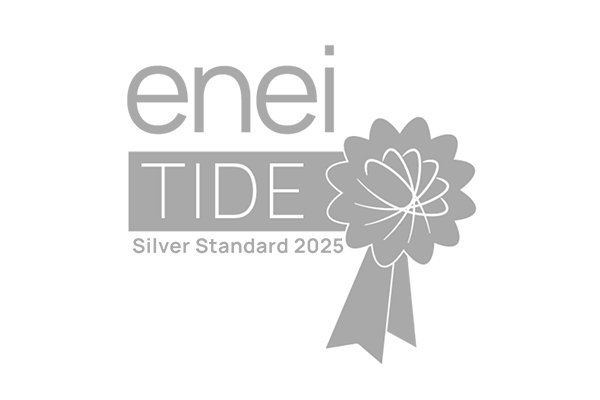
Contributors: Kathryn Argo
Date published: 9 July 2024
How will SEPA’s proposed new environmental regulations in Scotland affect rural businesses?
The Scottish Environment Protection Agency (SEPA) is the principal environmental regulator in Scotland.
Its role is to protect and improve Scotland’s environment.
As part of SEPA’s efforts to improve environmental regulation, it is running a joint consultation with the Scottish Government on new rules that could bring the regulation of waste, water, industrial activities, and radioactive substances into one common framework (currently in draft as the Environmental Authorisations (Scotland) Amendment Regulations 2024).
The current rules – known as the Environmental Authorisations (Scotland) Regulations 2018 (the “2018 Regulations”) – came into force in September 2018. The 2018 Regulations intended to provide a standardised framework for environmental authorisations.
There are different types of authorisations under the 2018 Regulations dependant on the risk level of the activity.
These are:
General Binding Rules (GBRs). These are rules covering specific low risk activities. If you intend to perform an activity covered by the GBRs, you must adhere to the rules. If you comply fully, then no authorisation is needed.
Notifications. These are used for low-risk activities where a decision on an authorisation is not required, but SEPA need to be aware.
Registrations. An application is required to obtain a registration. This is for activities where a straightforward assessment by SEPA is sufficient.
Permits. These are used for higher-risk activities where a more thorough investigation is needed.
Currently, the 2018 Regulations only apply to the regulation of radioactive substances.
The consultation proposes to extend the regulations to include waste, water, and industrial activities.
The Scottish Government believes that “bringing all four environmental regulatory regimes together in the common framework provided by the 2018 Regulations will ensure a consistent approach to environment regulation”.
Water
The Water Environment (Controlled Activities) (Scotland) Regulations 2011 (CAR) is the current framework regulating the water environment in Scotland.
The intention is for existing CAR licences and registrations, for example in relation to a septic tank, to automatically become an authorisation under the regulations, meaning that existing licence holders will not need to reapply.
However, there may be some situations where reapplication is necessary, for example where an existing licence does not comply with the conditions in the equivalent application.
The current GBRs in CAR will be incorporated into the draft regulations with some minor amendments, for example the addition of a notification requirement.
The draft regulations also include the addition of a new GBR relating to the discharge of hot tub wastewater from a single hot tub to groundwater. The new GBR will permit the discharge of a single hot tub but will require a registration for the discharge of more than one.
A new GBR relating to the installation and removal of temporary structures in a river, burn, ditch, or loch not otherwise regulated is also proposed.
Industrial Activities
The current framework relating to industrial activities is the Pollution Prevention and Control (PPC) regime.
The consultation recognises the complexity of the current framework and seeks to simplify this in the draft regulations. It is intended that existing permits under the PPC will convert to authorisations under the regulations without the need to reapply.
As with water activities, there may be a small number of existing registrations where reapplication will be needed as it does not comply with the conditions in the equivalent application.
The draft regulations propose to create new environmental activities under the heading of industrial activities, including a new carbon capture activity.
The PPC regime provides the current regulations for carbon capture but requires to be updated. The draft regulations encompass new carbon capture technologies and aim to ensure carbon capture activities with the same environmental risk level are treated identically. Under the draft regulations, carbon capture removal technologies such as Direct Air Capture will require an authorisation.
Non-waste anaerobic digestion is proposed as a further new activity. The current regime regulates the anaerobic digestion of waste but does not regulate the anaerobic digestion of non-waste substances in the same way, despite the similar environmental risks.
The impact of an anaerobic digestion plant is dependent on a variety of factors, such as size, but they can have significant environmental impact. The consultation notes that regulation of these will balance the economic benefit and net zero with any environmental risks.
In addition to the new activities, a GBR is proposed relating to the use of crushing and screening equipment, as it is recognised the environmental risk here is typically minimal.
Waste
The consultation addresses the fact that the current framework is complicated, with several different pieces of legislation to be considered.
By incorporating waste into the draft regulations, the intention is to provide clarity and regulatory consistency.
The draft regulations keep the definition of a waste management activity broad to ensure that existing regulated waste management activities fall under this. The definition excludes waste management in a person’s private home or residence to ensure that taking household waste to a recycling centre, for example, does not need an authorisation.
The draft regulations propose the addition of a new activity relating to waste, applying sewage sludge to land. The use of sewage sludge for crops is a practice to improve nutrients.
The draft regulations require the transport, storage and use of sewage sludge to be subject to an authorisation and introduces requirements relating to the quality of the soil. Parts of the pre-existing “Safe Sludge Matrix” have also been incorporated.
Four new GBRs are proposed to replace existing exemptions under the Waste Management Licencing (Scotland) Regulations 2011, meaning fewer registrations will be required.
These are:
- the temporary storage of waste at the place of production;
- the temporary storage of waste at a place controlled by the producer;
- the temporary storage and treatment of waste at a collection point; and
- the deposit of non-hazardous dredging sludges or sediment on or alongside the bank or towpath of inland waters from which they have been dredged.
Ammonia Emissions
In addition to consulting on the inclusion of waste, water, and industrial activities within the 2018 Regulations, the consultation also seeks views on reducing ammonia emissions.
The consultation confirms that agriculture accounted for 92% of the total Scottish ammonia emissions in 2020 and these emissions are not decreasing at the same rate as other air pollutants. Therefore, the Scottish Government is inviting views on how these ammonia emissions, particularly in relation to livestock farms, can be better controlled.
No decisions have been made yet, but the consultation provides some suggested actions, including increased washing of fouled areas.
The Environmental Authorisations (Scotland) Amendment Regulations 2024
This article has focused primarily on the new activities and GBRs proposed, but these are just a few of the numerous amendments discussed in the consultation to be incorporated into the draft regulations.
The Scottish Government and SEPA’s consultations closed on 31 March 2024 and 12 April 2024, respectively, so it remains to be seen if the draft regulations will be revised based on consultation responses.
The responses are currently being analysed and will be published, where consent has been given, in due course.
Should you have any questions about the applicability of these or other legislative provisions to your business, our market-leading rural team will be happy to offer advice.
This article was co-authored by Trainee Erin Connor.
Contributors:
Kathryn Argo
Senior Solicitor
To find out more contact us here
Sectors: Rural Property and Business
















